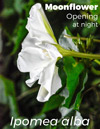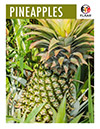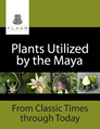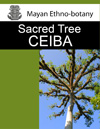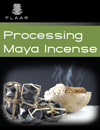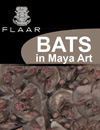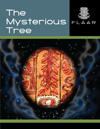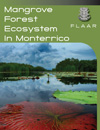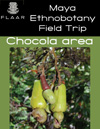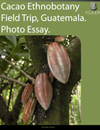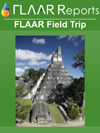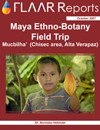When I was studying Maya iconography, I kept finding references to the “Blom Plate.” I wished to have a nice line drawing, so I went to see where the plate was so I could photograph it, and from the photograph to have a line drawing.
I learned, much to my surprise, that “no one had seen the plate since the 1950’s when Blom photographed it.”
So I began to check around. The plate had been photographed by Frans Blom, the Danish anthropologist, in Oaxaca , in a private collection. Frans Blom is known for several things, one being his infamous wife, Trudy Blom, the piquant champion of the Lacandon Maya at Na Bolom in San Cristobal de las Casas, Chiapas, Mexico. The saga of the alcoholic Frans and the choleric Trudy are worth of a movie in themselves. Frans, before he became an alcoholic, co-authored “Tribes and Temples” (with anthropologist Oliver Lafarge) and other key early anthropological studies, based on his travels through southern Mexico.
It took me several years, but I finally met someone who had seen the Blom Plate in the 1960’s. And evidently it was still in Oaxaca, after all these years (this was in the 1970’s or early ‘80’s). The person said the plate was in a trailer court.
So I drove to the trailer court with a complete photo studio. When I got there, the court had just recently been sold. No private collection. No Blom Plate. Bummer, bummer.
So I kept checking around. Another year went by. By now I had the name of the former trailer court owner. I made contact. Yes, the plate was still with him, wrapped in paper, in a box, in storage in his back room. The most priceless treasure imaginable, not only not available to Mayanists, but abandoned in a bodega.
What a travesty.
So I drove to Oaxaca again. It’s about a 5,000 mile drive; so about 10,000 miles round trip. With a full photo studio: Hasselblad cameras, tripod, light stands, Lowel Tota-lites, backdrops, etc. The owner very kindly let me photograph the plate.
Sometime later the owner contacted me and asked said, “I am getting old, what should I do with this plate?”
-
Just calculate how many museums would drool to have this plate on exhibit.
-
Just think how many collectors would love to show this plate on their mantelpiece.
But instead, I suggested that he donate the plate to INAH so it could be in a Mexican museum to be appreciated by the descendants of the people who painted the scene. INAH is the Mexican government anthropology institute.
So this is how the plate ended up donated to a museum in the Yucatan Peninsula. I vaguely remember it first went to a museum in Chetumal, and was subsequently transferred to the Museum in Merida , where I re-photographed it a year later.
Frankly, when I rephotographed the Blom Plate in Merida, I was very proud to stand in front of this masterpiece of pre-Columbian Maya art and realize it was here because of several years of tracking it down, and my suggestion that it should stay in Mexico and not go to a foreign collection or foreign museum.
Where was the Blom Plate actually from?
It would not be impossible to have a striking Maya plate being found in Oaxaca. The Zapotecs and Mixtecs “collected” art, just as did the later Aztecs. Aztec caches included Olmec masterpieces. The Aztec actually dug up buildings and sculptures at Teotihuacan and reconstructed them in Tenochtitlan. But the plate ended up in Oaxaca because the person who got the plate out of the prehispanic grave moved to Oaxaca to retire (with a retirement business, the Oaxaca trailer courts).
|
Blom Plate with scene from Popol Vuh. Museo Regional de Antropología de Yucatán, Mérida.
|
Having the plate exhibited in Chetumal was especially appropriate because that is where it was excavated. The bulldozer driver who was leveling an entire Maya site for the Chetumal airport found a complete burial. The jade went to the then-alcalde or governor or whomever “appropriate.” The engineer in charge, the American who later retired to Oaxaca, got the plate. Frans Blom somehow heard about it and photographed it in the 1950’s, I tracked it down more than two decades later, and this is how the photograph became available in my “Monsters and Men in Maya Art,” the published version of my PhD dissertation. The plate of course has since been republished by Michael Coe and others. But not really any footnote as to the actually rather long history of how this plate became available for Mayan students, scholars, and interested lay people to study and enjoy.
|
Scene from the Blom Plate of Hunapú and Ixbalanqué shooting a skeletal water bird perched above the Principal Bird Deity (7 Macaw of the Popol Vuh). A skeletal water bird in this position is not common. But what the Principal Bird Deity is perching on is quite standard representation of features of the Surface of the Underwaterworld, as pictured throughout the 1987 publication of my 1985 PhD dissertation. This is Abb.425 from the ADEVA publication, 1987
|
I hope Mayanists and aficionados enjoy learning some of the history of Maya studies. Shortly I will be also writing on the other FLAAR projects that we are proud of, namely being responsible for the protection and founding of the Parque Nacional Yaxha. If you watch TV, you know the Survivor was filed there last year. This would not have been a park if we had not labored for five years with the government to develop and this park and to protect it until the government finally took over and posted their own caretakers.
Iconography, Epigraphy, Ceramic Phase.
The plate is Late Classic, roughly equivalent to Tepeu 1 or Tepeu 2, and is closer to Peten styles than anything in Yucatan or adjacent parts of Campeche. The plates of southern Campeche, Chiapas, Tabasco, and Quintana Roo are not as well published as are the artifacts of Uaxactun or Tikal, so it is hard to make further statements on what regional workshop it came from, until publications of this millennium catch up with the standards set by the Carnegie Institution of Washington back in the 1940’s through 1950’s.
The iconography and epigraphy of this plate could take two dissertations to write: one on the hieroglyphic text, the other on the iconography of the Hero Twins of the Popol Vuh. The semi-circle of hieroglyphs are in a typical position where you usually expect to find a PSS, Primary Standard Sequence, or at least a local regional variant of the PSS. Michael Coe is the first to write a complete monograph on what he named as the Primary Standard Sequence. And for modern times, Mike Coe is also the champion of showing once and for all the usefulness of the Popol Vuh as a resource for better understanding the Classic Maya iconography, especially of Chiapas, Peten, and Honduras areas of Mesoamerica.
I already wrote my own comments in my PhD dissertation, Karl-Franzens Universtaet, Graz, Austria, published by ADEVA and distributed by FLAAR. We still have a few copies left.
Most recently updated April 2011.
First posted July 2006.



